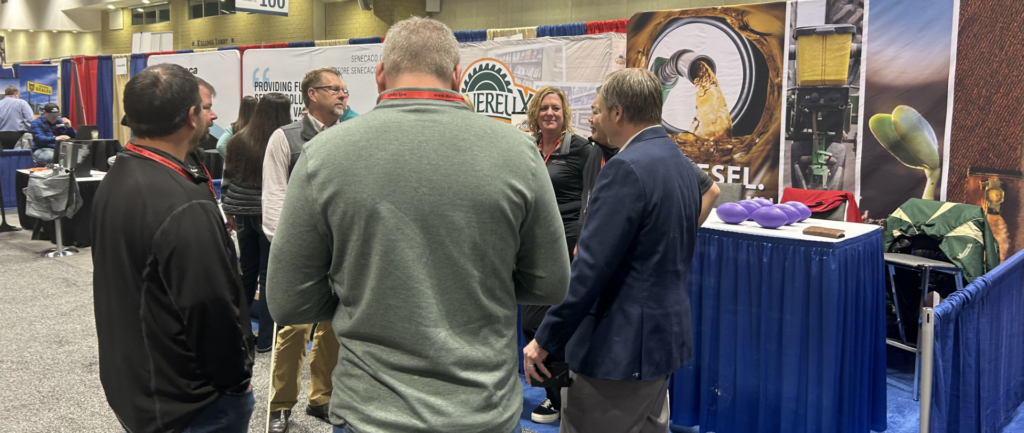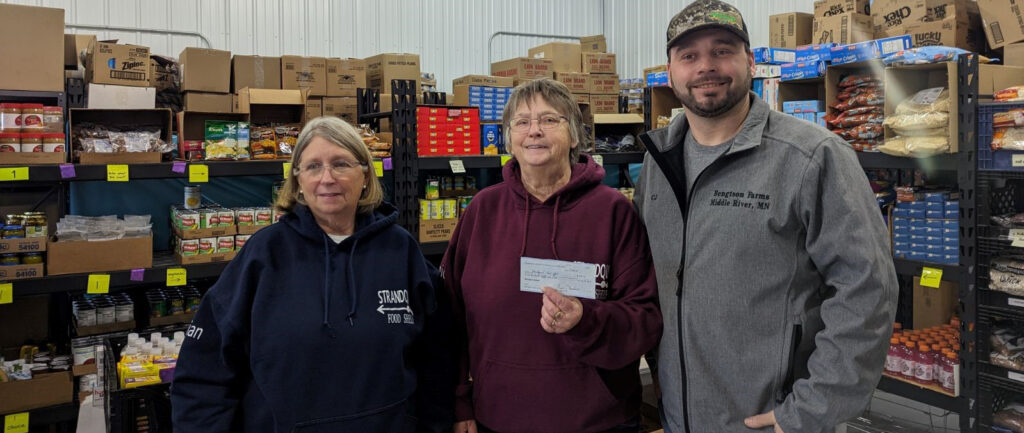The United Soybean Board is a proud funding partner and endorses a multi-organizational initiative to connect private sector capital investors with innovative climate-smart, soil-centric agricultural technologies. U.S. farmers are leaders when it comes to using leading-edge technologies and best management practices to improve soil health while also increasing economic and environmental sustainability. By scaling up climate-smart agriculture, U.S. agriculture could reduce greenhouse gas (GHG) emissions by more than half by 2025, from 9.9% to 3.8%, and ultimately be a carbon sink by 2035 at -4% of total U.S. GHG emissions by 2035.
U.S. Farmers & Ranchers in Action (USFRA) partnered with the World Business Council for Sustainable Development, The Mixing Bowl and Croatan Institute to release a report that analyzes the state of emerging soil health technology and the need for climate-smart technologies to be commercialized with partnership funding from private sector capital investors.
“U.S. agriculture has the potential to be the first net negative greenhouse gas emissions sector in our economy,” said Lynn Rohrscheib, USB farmer-leader from Illinois and USFRA board member. “Reaching that goal is important to me because sustainability’s connection to improving soil health translates into long-term viability for my farm and the next generation.”
Providing economic context, the report included an in-depth analysis of the $972 billion in annual capital that flows from asset owners through asset classes and financial intermediaries to participants in the U.S. agricultural value chain. The report revealed the primary funding sources include institutional investors (approximately $600 billion), retail investors (approximately $360 billion) and U.S. government via federal/state payments and incentives (approximately $20 billion).
Beyond investment, leveraging technology to accelerate and scale on-farm adoption of climate-smart agriculture encompasses several action steps that align with USB’s sustainability goals. This ranges from supporting the development of tools that collect on-farm data to exchanging best practice know-how and data related to soil health, yield, profitability, etc. The report outlines these action steps as a vital linchpin to unlock the full potential of our soils.
“It is critical the financial community partners with farmers and ranchers to help the U.S. achieve a transitional net-zero economy,” USFRA CEO Erin Fitzgerald said. “Farmers and ranchers and the sector need investment over the next decade to realize the potential of agricultural soils as a natural climate solution.”
Climate-smart agriculture is a suite of practices that increases productivity and income, enhances resiliency and adaptive capacity and reduces GHG emissions. Overall, the USFRA report focuses on six established farming and ranching practices, spanning:
• No-till/reduced tillage with retained residues
• Cover crops
• Crop rotation
• Compost application
• Managed grazing
• Integrated crop and livestock systems
The soy checkoff’s sustainability goals intrinsically align with the six practices outlined in the USFRA report. From reducing land use impact by 10%, greenhouse gas emissions by 10% and soil erosion by 25%, while increasing energy use efficiency by 10%, U.S. soybean farmers can use sustainable farming practices to reduce their environmental footprint.
“This report reinforces the value of what can be achieved through sustainable farming practices and the momentum possible through investments in technology to enable U.S. soybean farmers to become carbon-negative,” said Mace Thornton, USB vice president of communications and marketing strategy and USFRA Communications Council chair. “Partnerships for investments are critical to forge the widespread integration of these climate-smart agricultural technologies.”
The release of this investment report is one step and an essential pathway in the process of mapping soil carbon sequestration targets. USFRA will bring together representatives from each of the participating organizations, companies and investment partners to co-create action plans and funding/investment streams to continue moving the initiative forward. In addition to USB, the research was funded by Wells Fargo & Company.
About United Soybean Board: United Soybean Board’s 78 volunteer farmer-directors work on behalf of all U.S. soybean farmers to achieve maximum value for their soy checkoff investments. These volunteers invest and leverage checkoff funds in programs and partnerships to drive soybean innovation beyond the bushel and increase preference for U.S. soy. That preference is based on U.S. soybean meal and oil quality and the sustainability of U.S. soybean farmers. As stipulated in the federal Soybean Promotion, Research and Consumer Information Act, the USDA Agricultural Marketing Service has oversight responsibilities for USB and the soy checkoff. For more information on the United Soybean Board, visit unitedsoybean.org.
About USFRA: U.S. Farmers & Ranchers in Action, formerly U.S. Farmers & Ranchers Alliance, represents farmer- and rancher-led organizations, and food and agricultural partners, with a common vision to further our global sustainable food systems. We believe farmers uniquely contribute to nourishing our planet, people and natural resources. Our focus is creating a proactive collaboration between the best minds in food, agriculture, science and technology to co-create solutions that will result in environmental, social and economic sustainability. Learn more at www.usfarmersandranchers.org.
To view the release online, visit unitedsoybean.org.







